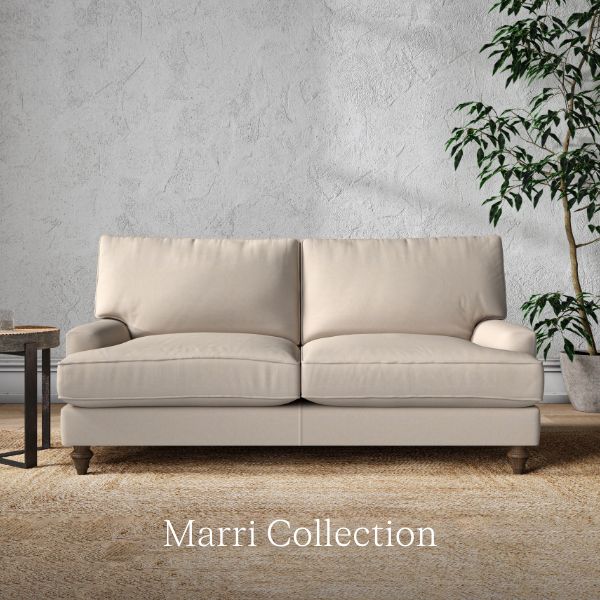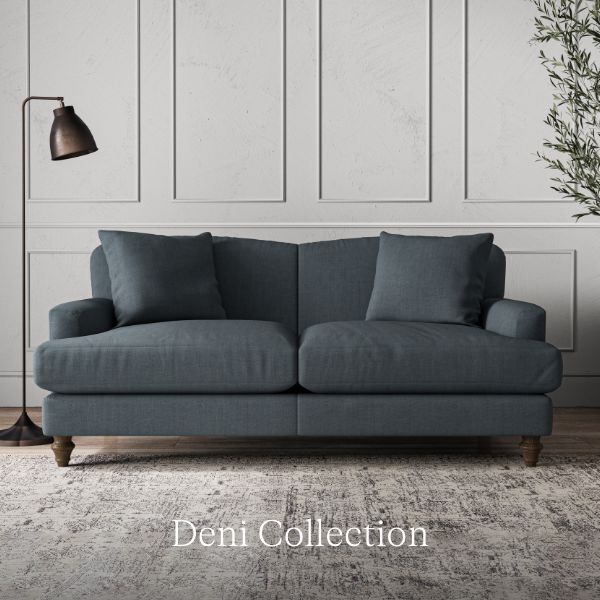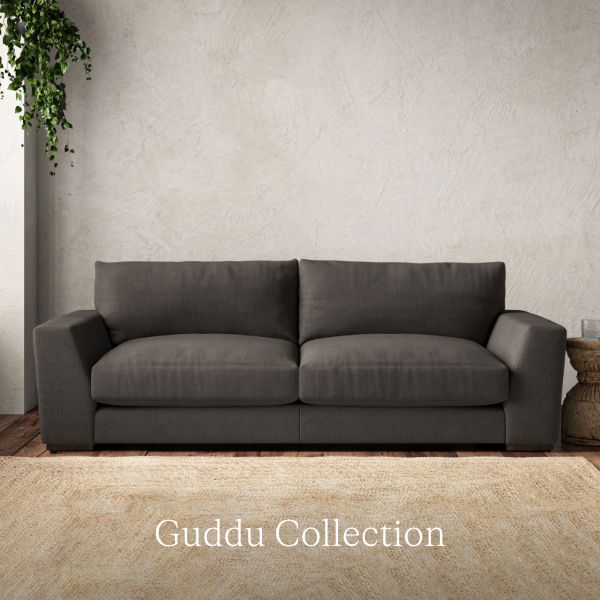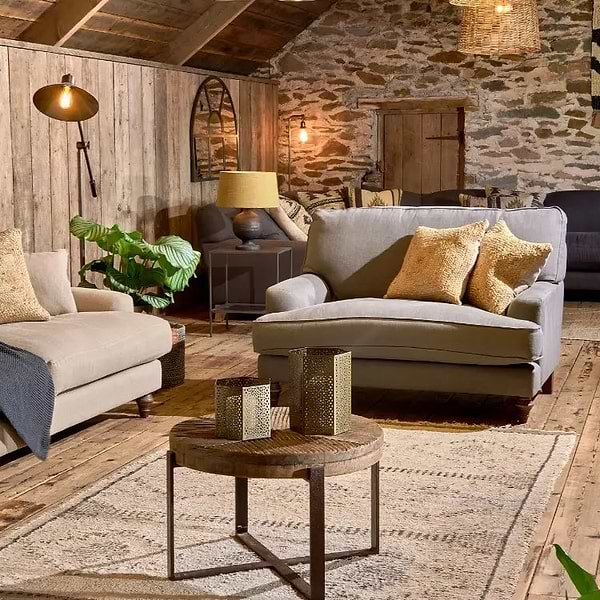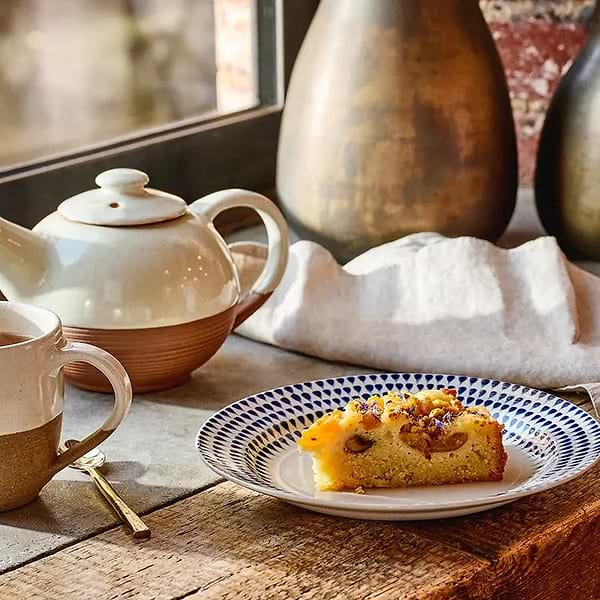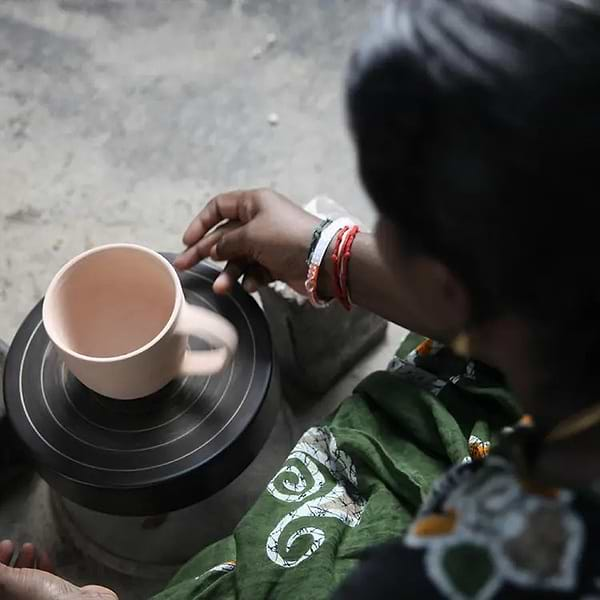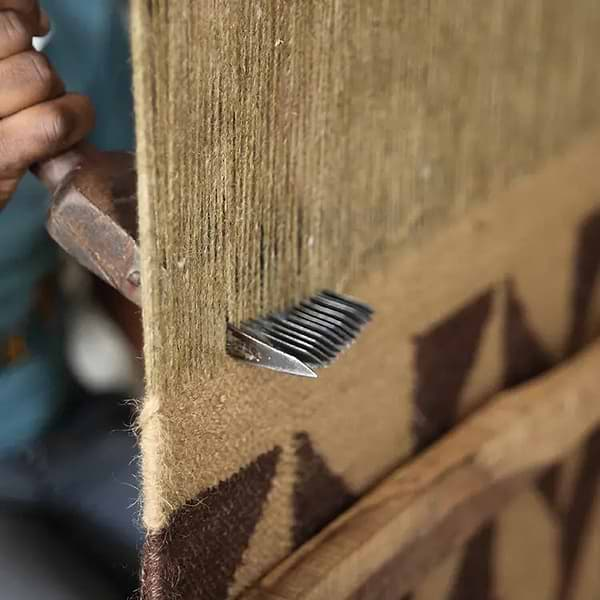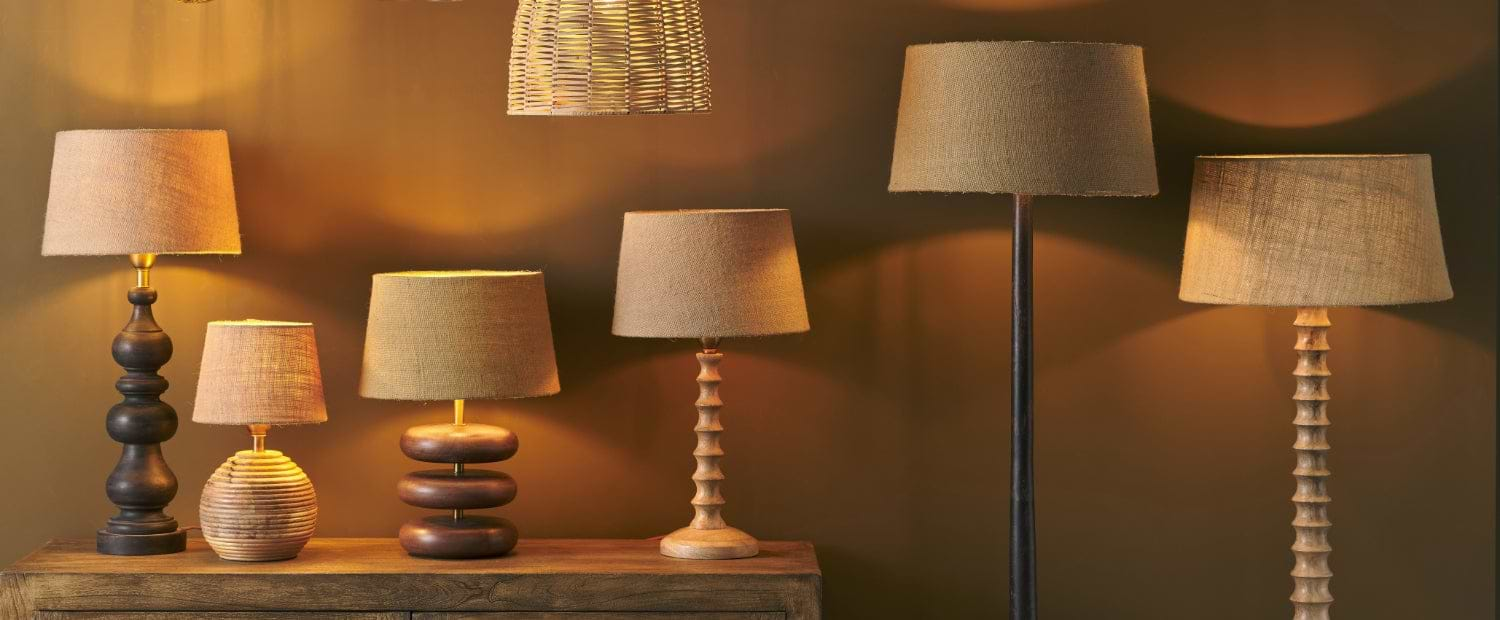Lighting Buying Guide
Choosing the right lighting can transform a home. By simply adding carefully placed floor lamps, wall lamps, table lamps or pendants, you can cleverly create focal points and highlights in a room. We’ve collated what we feel is everything you need to know when buying lighting for your home, from choosing the right size lampshade for your lamp to selecting materials to compliment your space.
Each of your rooms serve a different purpose, so it's no wonder that the lighting you choose should reflect this. For more relaxed spaces, such as the living room and dining room, you might prefer to use a warmer light to create an ambient setting. Yet for more functional spaces such as kitchens, wall lighting, spotlights or pendant lighting serve and equally important purpose.
Pendants
The beauty of pendant lights is that they can be hung from anywhere on your ceilings to provide a clear spotlight and focal point to a specific area. The height you choose to hang your pendant lighting can vary as much as you like, giving you the flexibility of creating a more general or spotlight approach. Pendant lights are often found over kitchen islands and dining tables and serve as a stylish accessory as well as usefully casting light over practical areas of the room when hung low enough. They also create a statement in an entrance or hallway when using clusters. To use pendants as a more generic light source for a living or dining room, hang in the centre of the room and keep the flex shorter so the light fills the room or alternatively use a flush mount. Choose from various lampshades to create your desired effect, whether it’s wicker or glass pendant lights, or simple woven lampshades. Where to use pendant lighting:
• Hallway
• Kitchen
• Dining Room
• Living Room
• Bedroom



Spotlights
Much like a pendant light is designed to light up a specific area, spotlights serve a similar function within kitchens. Fixed to the ceiling or walls, and angled to specific areas, spotlights are a practical solution to lighting up darker corners that may not otherwise receive much light, such as work surface corners. For added ambience created by spotlights, try installing a dimmer switch to allow you to choose between bright or low lighting.


Table Lamps
Table lamps are a versatile option and can be placed in almost any room in your home to create a cosier living space. Placing a glass or brass table lamp on a console table in a hallway, on a side table in a living room, or beside the bed as a reading light, can help create warm pools of light whilst adding style and character to a room. Often kitchens can be bright due to largely being lit by spotlights, so adding a table lamp on a console table or dresser can help to bring warmth and a more focused light to the room. Serving as an additional light source, they have the ability to transform a space which can be a welcome addition if your kitchen is a dual functioning dining and entertaining space.



Wall Lights
Wall lights and wall sconces can often be overlooked yet can serve an important role in creating more focused pools of light whilst offering a decorative lighting alternative. When positioned over a painting, or in darker corners of a room, wall lights create an ambient setting which can be preferable for rooms used for relaxing, such as the living room or home office. Wall lights with cables and plugs are a great option for the bedroom as they’re easy to switch on/off and there’s no need for an electrician to fit them.
Wall lights can be accompanied by other more localised lighting types, such as table lamps and standing lamps for a softer approach to lighting a room. Introducing a dimmer switch can give you further options in creating brighter or softer lights, depending on the functionality of the room. For a living room, you might prefer the option to dim the lights to create a cosier setting. Wall lights are often used in bathrooms, either side of mirrors, to provide light to specific areas. In these cases, choosing the correct light and bulb that is suitable for bathrooms is important. You can read more about this further in our guide.
Where to use wall lights:
• Living Room
• Study
• Bedroom
• Hallway
• Bathroom



Floor Lamps
Floor and standing lamps are an effective light source for darker corners or to serve as a reading lamp. They act as a striking focal point in a living space, providing a great sense of style to a room. Paired with a comfy armchair or sofa to create a cosy reading nook, floor lamps are usually used in living rooms or home offices but can also work well in bedrooms. They generally provide a more ambient localised light, so are less functional for kitchens and bathrooms, and are often seen as a statement feature within a room.
Choose from various styles, from antique brass floor lamps, to more traditional standing lamps with soft linen shades.
Where to use floor lamps:
• Living Room
• Home Office
• Bedroom



Garden and outdoor lights
Outdoor lights are often overlooked but are vital for outdoor spaces that are used for entertaining. Providing a brighter source of light for the darker evenings and perfect for extending alfresco dinner parties. Garden lights should be used to light up a space so that it can be used appropriately, however be careful to avoid using bulbs that are too bright and create a blinding light, such as flood lights on a football pitch.
Choose lighting that is specifically designed for outdoor use, where it is hard wearing and waterproof. Our designs are made using iron for a sturdy wall light, designed to light up the darker corners of an outdoor space.



Choosing the right lampshades
Selecting a suitable lampshade to pair with your lamp is key to the final result. If too large or small, the lamp can look out of proportion, so we’ve put together tips on the general rule of thumb for choosing lampshades.
• The height of the lampshade should be roughly ¾ of the height of the base.
• The width of the lampshade base should be roughly equal to the height of the lamp, from base to fitting.
• The shade should be at least half an inch wider than the base on both sides for balance
• If choosing between two sizes, go for the larger size unless you have a very thin and tall lamp, which suit smaller lampshades
• Floor lamps take a larger lampshade with a base diameter of 45cm (18 inches) or larger.

Choosing the right lampshade for your room
For smaller rooms with less space, choose a lamp that suits a smaller lampshade to avoid the lamp looking too large for the room. Consider smaller table lamps and wall lights that can fit a small lampshade in this case. For larger rooms with more space, you can afford to allow for a larger lamp and shade, exploring floor lamps as well as table lamps.
Similar to the way you choose a lamp size depending on the room, consider the size of the surface and surrounding space when choosing a table lamp. If placing a lamp on a bedside table, generally these don’t allow for much surface area, so don’t choose a lamp that takes up too much space.


Choosing the right colour lampshade
Often we choose the colours of soft furnishings to compliment the season we’re in, however practically it’s not always realistic to suggest changing lampshades, cushions and throws every six months. If space does allow, and you enjoy updating your home more regularly, opt for deeper and richer tones for Autumn and Winter to create a cosy ambient setting for the colder months. For Spring and Summer, light and pale shades of neutrals are well-suited to the lighter days where we spend less time inside. If only choosing one colour, natural-coloured shades such as our Dia Jute Lampshade in natural or ink work well for almost any room setting and generally compliment other materials well.

What is the best material for a lampshade?
Lampshades can be made using various materials, with many using linen, raffia, cotton or card. These materials are a popular option as they are both timeless and work well in most room settings. Other materials such as woven rattan, natural wicker, handblown glass or even antique brass are all popular options that add style and texture to a room. Incorporating such materials depends on otherpieces you have in the room, so choose based on your style. For a more contemporary setting, use a glass pendant shade, or a more rustic room might use a woven rattan lampshade that adds texture and celebrates natural materials.
-
Dia Jute Lampshade - Natural
![nkuku LAMPS AND SHADES Dia Jute Lampshade - Natural (NEW)]()
- Translation missing: en-GB.products.product.regular_price
- £35
-
Dia Jute Lampshade - Ink
![nkuku LAMPS AND SHADES Copy of Dia Jute Lampshade - Ink (NEW)]()
- Translation missing: en-GB.products.product.regular_price
- £35
- Liquid error (snippets/product-lifecycles line 39): comparison of String with 0 failed
- Liquid error (snippets/product-lifecycles line 39): comparison of String with 0 failed
- Liquid error (snippets/product-lifecycles line 39): comparison of String with 0 failed
Choosing the right lightbulb
What is an LED?
This stands for light emitting diode. LEDs are a low-energy option and more efficient in how they produce light, where an electrical current passes through a microchip, illuminating the light source.
What does wattage mean?
All light bulbs have a wattage rating which allows us to measure how bright it is. A Watt (W) is an International Standard unit of electrical and mechanical power that measures the rate of energy. The higher the wattage, the more energy consumption is used.
What are lumens?
A lumen is a measure of the amount of brightness of a light bulb. Whereas the wattage measures the power consumed by the bulb, lumens will tell you how bright it is.
Bulb Warmth – The Kelvin Scale
We use the Kelvin Scale to determine how warm or cool a light source is. Colour temperature is measured in degrees of Kelvin (K) on a scale from 1,000 to 10,000. Temperatures for most lighting usually fall between 2000K to 6500K, with the higher the number resulting in a cooler temperature. The Kelvin scale can be useful in planning what light bulb to use for different rooms, depending on their usage. For example, you might prefer a warm cosy light for a living room, and a cooler light for bathrooms or outdoors.
What is an IP rating?
IP stands for Ingress Protection mark, which declares the level of protection the bulb has against dirt and water. There is always two numbers after the letters IP; the first represents protection against liquids. The higher the number, the greater protection. Most of us only need to take notice of IP ratings when choosing lighting for bathrooms and outside spaces. Rating IP64 are sufficient for indoor and outdoor use, provided they are not entirely exposed to the elements. Most other bulbs you find around your house would likely be IP20, where they have little to no exposure to dust and water.
How to choose the right lightbulb?
1. Choose between bayonette, screw or pins/pegs. Choosing the correct bulb will depend on what type of fitting your lamp has. We call this fitting a ‘cap.’
Bayonet Cap – these are known as the ‘twist and lock’ bulb, which is the most common option if your light fitting doesn’t take a standard screw cap bulb.
Edison Screw Cap – this is one of the most common types of bulb fittings, where it screws tightly into place within the light fitting. They come in two sizes E27 and E14.
GU10 Cap – despite looking different to the traditional bayonet bulbs, these have two pins 10 mm apart. Traditionally, these bulbs are halogen, but more manufacturers are now making LED versions which are more energy-efficient.
G9 bulbs are a compact style that feature two loop pins that push into the fixture. These are spaced 9mm apart and allow a simple installation. G9 light bulbs are commonly used in decorative lighting fixtures as they are small, bright and don’t distract focus from the feature. These bulbs are available in LED and Halogen versions.
Choose between CFL, halogen or LED. This will depend on how efficient you would like your bulbs to be, as well as how bright and functional they are. CFL’s are more durable and energy-efficient than incandescent bulbs and halogen bulbs which makes them a popular option, however we would always advise using LED bulbs as they are even more energy-efficient, using around 10 watts to provide a brightness of a 60-watt regular bulb.
2. Consider how bright you want the room and select how many lumens you need. If your light is serving a function, such as a spotlight in a kitchen, then you may want to choose a brighterbulb. For more atmospheric lighting, consider choosing lower level lighting that creates a warm and cosy atmosphere.
3. Choose what colour lighting you want. Depending on what room your light is will dictate how cool or warm you will want the light. For bedrooms and living rooms, choose a warmer light, and for bathrooms, hallways, and outdoor lighting, consider a cooler bulb.
4. Choose what shape bulb you want. The most common shapes are traditional round, candle, spotlight, spiral and downlight. Most table lamps and floor lamps use a traditional round or candle lightbulb.





